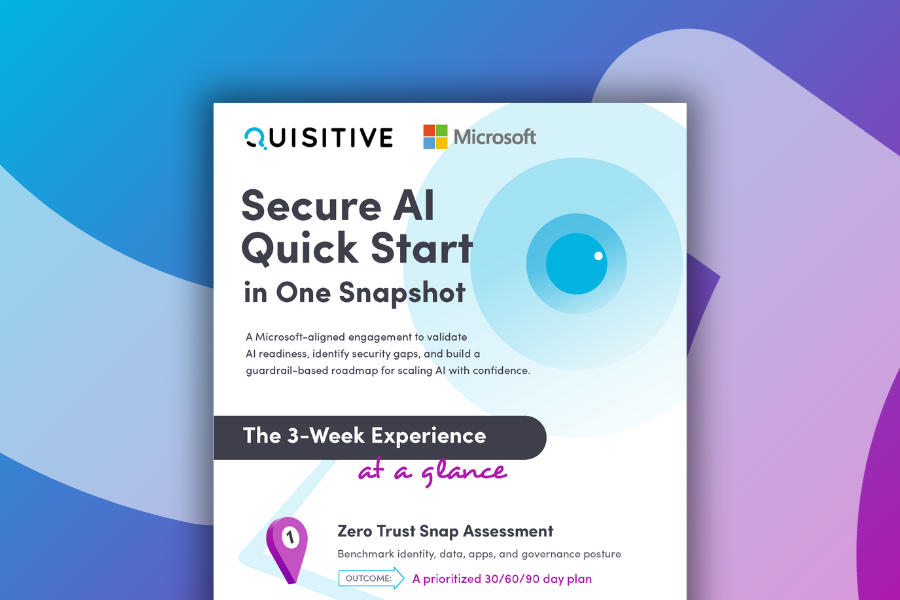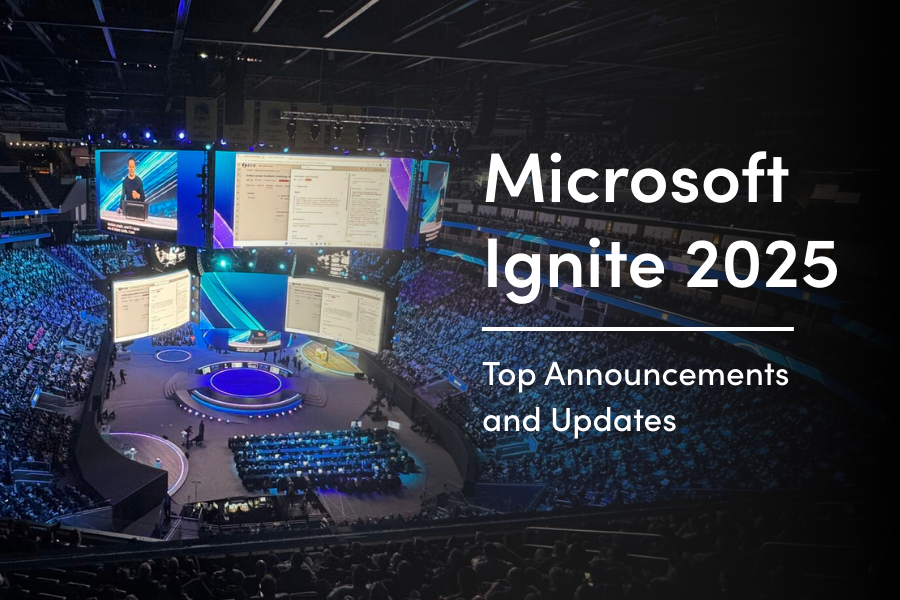Artificial intelligence is everywhere right now, but the buzzwords often blur together. Two of the most common terms causing confusion are AI agents vs AI assistants. While they sound similar, they’re not the same – and the difference matters if you’re serious about putting AI to work in your business.
Let’s break it down and look at real use cases.
AI Assistants: Helpful Companions for Single Tasks
AI assistants are tools designed to help humans complete specific tasks or answer questions. Think:
- Microsoft Copilot in Word helping you draft documents
- Chatbots answering FAQs on your website
- Voice assistants like Alexa or Siri fetching information or reminders
These assistants work in a reactive way. You give them a prompt, and they produce a response. They’re useful but generally limited to the scope of a single interaction or a narrow domain.
For example, Microsoft’s Copilot Studio lets businesses build conversational AI experiences and integrate them into Teams, websites, and apps. It’s powerful. But it’s still designed for helping humans rather than autonomously running business processes.
AI Agents: Autonomous Doers with Broader Responsibility
AI agents go a step further. Rather than simply responding to a user’s question, they can:
- Decide what to do next based on goals and rules
- Take actions across different systems and data sources
- Orchestrate workflows without a human telling them each step
In other words, AI agents are proactive rather than just reactive. They’re built to handle entire processes, not just answer a question. For instance:
- An AI agent in healthcare might scan incoming patient records, extract key data, assign priority levels, and notify clinicians – all without human intervention.
- In finance, an agent might analyze transactional data in real time, detect suspicious patterns, and automatically initiate fraud investigations.
- In retail, an agent could track inventory levels, forecast demand spikes, and reorder products before stock runs out.
Agents combine advanced reasoning, data integration, and automation to deliver outcomes, not just insights.
Why the Distinction Matters
Businesses are pouring money into AI. IDC predicts global AI spending will reach $516 billion in 2025, up from $383 billion in 2023 (IDC). But there’s a problem: most AI efforts stall out before creating real value.
“88% of AI pilots fail to reach production (CIO.com)”
One big reason? Many organizations are stuck building disconnected assistants instead of agents that deliver measurable results. AI assistants can improve productivity, but they rarely transform processes or cut costs in a significant way.
AI agents, on the other hand, can handle end-to-end business activities – reducing manual work, speeding decisions, and creating new value streams.
Microsoft’s Push into AI Agents
Microsoft isn’t just talking about agents – they’re building them into every layer of the stack.
In Azure AI Studio, developers can now use Azure AI Foundry’s Agent Service to build and deploy enterprise-grade AI agents that go far beyond basic chat. These agents can call APIs, orchestrate multi-step workflows, and collaborate with other agents to complete complex business tasks. Real-world examples include Nasdaq, which uses these agents for market data processing, and Carvana, which leverages them to enhance customer engagement and support.
Copilot Studio is also evolving from basic bots to intelligent, autonomous agents. The new Agent Builder allows users to create agents that integrate with business logic, use generative actions, and even simulate human interaction with websites and legacy apps – clicking buttons, filling forms, and navigating systems without APIs.
Microsoft plans to release prebuilt agents for tasks like expense tracking and supply chain status, and early adopters like McKinsey and Clifford Chance are already testing agent-based workflows.
Even Power Automate plays a key role in this shift. With embedded AI and natural language generation, users can create automated flows that behave like agents – detecting conditions, analyzing data, and triggering actions across Microsoft 365, Dynamics, and third-party systems. From onboarding new hires to reconciling vendor payments, these flows increasingly function as digital coworkers.
This isn’t just about chatbots with better answers. It’s a strategic shift from passive assistants to active agents that execute, adapt, and scale across the Microsoft ecosystem.
How Quisitive’s AI Operations Center Helps
Here’s where Quisitive comes in. Building one chatbot is easy. Deploying hundreds of AI agents that connect to business systems, handle data securely, and scale across the enterprise is another story.
Quisitive’s AI Operations Center is designed to help you:
- Deploy and manage AI agents from a single platform
- Integrate agents with your Microsoft environment, including Copilot, Azure AI Studio, and Power Automate, and other systems
- Maintain security, governance, and cost control as you scale AI adoption
- Gain expert services from Quisitive’s team to plan, build, and optimize your AI projects
Customers using Quisitive’s AI Operations Center have seen up to 50% faster time to production and 30% lower AI project costs – proof that the right operational layer makes AI agents practical instead of just theoretical.
Why You Should Care
If your organization is investing in AI, the question isn’t AI agents vs AI assistants – it’s how to use both together for maximum value.
Assistants improve how people work. Agents transform how your business operates.
Quisitive’s AI Operations Center gives you the tools, expertise, and operational framework to deploy AI agents that don’t just chat, they get real work done.
Ready to move from experiments to outcomes? Let’s talk about how to turn your AI vision into reality.
AI Assistants vs. AI Agents At a Glance
Artificial intelligence is reshaping how businesses operate, but not all AI solutions are created equal. Many organizations confuse AI assistants, tools that help humans complete tasks, with AI agents, which go further by acting autonomously to execute business processes.
Understanding the difference is critical for leaders aiming to move AI from pilot projects to solutions that drive real results.
| AI Assistants | AI Agents | |
|---|---|---|
| Purpose | Help humans complete specific tasks or answer questions | Act autonomously to perform tasks and make decisions across systems |
| How They Work | Reactive – respond to user prompts | Proactive – execute workflows based on rules, data, and goals |
| Single-turn or short multi-turn interactions | Handle end-to-end processes without human intervention | |
| Limited to narrow tasks | Span multiple systems, data sources, and business functions | |
| Examples | Chatbots answering FAQs | AI agent processing incoming invoices and updating financial systems |
| Microsoft Copilot drafting emails or documents | Fraud detection agent monitoring transactions and blocking suspicious activity in real time | |
| Voice assistants like Alexa, Siri | AI agent analyzing customer sentiment across channels and triggering retention offers | |
| Technologies Used | Copilot Studio for conversational AI | Azure AI Studio, Copilot Studio, Power Automate for orchestrating complex tasks |
| Pre-trained language models for responses | Custom workflows, data connectors, and APIs for business processes | |
| Business Impact | Improves individual productivity | Transforms business operations by automating processes end-to-end |
| Saves time for specific tasks | Delivers measurable ROI through efficiency, cost savings, and new insights | |
| Typically lower cost to build | Greater value potential but requires stronger operational governance | |
| Why It Matters | Helps employees work faster and smarter | Drives real transformation by automating entire business functions |
Why Quisitive?
Quisitive’s AI Operations Center is built to help you deploy both AI assistants and AI agents at scale, with:
- Centralized management for all your AI solutions
- Integration with Microsoft technologies like Copilot Studio, Azure AI Studio, and Power Automate
- A team of AI experts who guide you from planning to production
- Governance and security controls to keep your AI safe and compliant

;)



